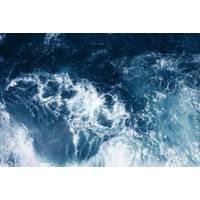
The World’s Most Powerful Ocean Current Could Slow by 2050
, it may allow the migration of warmer water towards Antarctica, which would cause more ice to melt and slow the current even more – creating a vicious cycle.And with that warm water comes the potential for migrating invasive species like the Southern Bull Kelp to reach Antarctica, disturbing the food web there – something the ACC may currently help to prevent.There may be global repercussions. A slowdown, along with any decline in ACC strength, is expected to reduce the ocean’s ability to absorb heat and carbon from the atmosphere. This has the potential to speed up climate change &ndash

Autonomous Multi-Vehicle System Designed for Long-Term Arctic Studies
of Arctic sea ice loss, which can guide informed policy and management decisions,” said Stella Batalama, Ph.D., dean of the FAU College of Engineering and Computer Science. “Additionally, there remains much to uncover about Arctic phytoplankton and algae, which play a crucial role in the food web and influence ocean-atmosphere interactions. This new system could enhance our scientific understanding of their ecological significance while supporting Alaska’s indigenous communities in adapting to future changes in wildlife and food resources.&rdquo

Climate Change is Changing Marine Phosphorus Cycles
50 years of nutrient data from the ocean collected as part of the Global Ocean Ship-based Hydrographic Investigations Program (GO-SHIP). They discovered that over the last half century, there’s been a major decline in phosphorus – a nutrient that plays a key role in the health of marine food webs – in southern hemisphere oceans.There can be cascading effects up the food web, said Gerace, as plankton forms the basis of many marine food webs.Concentrations of nitrate – a nutrient the team expected to decline – appear to remain steady. Nitrate is crucial for ecosystem functioning

Increasing Alkalinity Could Counter CO2 Acidity
, directly to the seawater.So far, little is known about the effects of this method on marine life, but a study by the GEOMAR Helmholtz Centre for Ocean Research Kiel has now assessed the impacts of a moderate alkalinity application, showing that the effects on zooplankton are likely minimal and that the food web could remain stable.The ocean naturally absorbs a quarter to a third of man-made CO2 emissions, but this process also leads to the acidification of seawater. By increasing the alkalinity of seawater through the addition of certain minerals (e.g., carbonates and silicates), the ocean can chemically

Study to Explore Impact of Floating Offshore Wind Farms on Ocean Life
the Celtic Sea, identified by the UK Government as a prime location for accelerating offshore wind infrastructure.AUVs will be used to investigate key ecosystem drivers, from physical ocean features such as fronts to biological hotspots like plankton blooms and foraging fish at the bottom of the ocean food web.Leveraging NERC’s Autosub Long Range 1500 will be used due to its ability to operate in strong tidal flows for weeks at a time.Professor Stephen Votier, expert in Seabird Ecology at the Lyell Centre, Heriot-Watt’s Global Research Institute for Earth and Marine Sciences, is leading the

Using Ocean Robots to Dive into Offshore Wind Farm Wake Effects
layers which are important to how the marine food chain functions.“During spring and summer months in much of the waters around of the UK, warm water overlies cold water, and this vertical layering determines the growth of phytoplankton, tiny plants which form the very basis of the oceanic food web.“Changes in the vertical mixing of the water impacts what nutrients and light the phytoplankton have access to. If they’re impacted, it will impact the entire food chain.”Endurance underwater observation platformsThe gliders, which are typically 1.5-2m long, and the specialist

WHOI’s Benjamin Van Mooy Awarded 'Genius Grant'
health and influencing climate dynamics. His studies on planktonic lipid dynamics reveal how these tiny organisms contribute to essential processes such as nitrogen, phosphorus, and carbon cycling in marine environments. This research is pivotal in understanding how shifts in marine ecosystems affect food webs, carbon sequestration, and broader climate regulation.One notable finding from Van Mooy’s early work involved phytoplankton in the phosphorus-scarce Sargasso Sea. He discovered that these organisms adapt by substituting phosphorus-containing lipids in their cell membranes with sulfur-containing

Oceans Have Seasons Too – And Climate Change Could be Messing with Them
Britain’s seas are rich in wildlife, but many of its species can only be seen with a microscope. These are the plankton – tiny algae and animals found throughout the ocean that are the foundation of the entire marine food web.As UK seas warm and cool with the seasons, the composition and abundance of these plankton communities naturally change. Like plants and animals on land, marine plankton undergo annual cycles that are dictated by seasonal patterns of light, temperature, and settled or unsettled weather. But unlike seasonal patterns on land, the ways plankton shift with the seasons

Scientists Find Rare Window Where Carbon Sinks Quickly Into the Deep Ocean
Looking out across the Southern Ocean near Antarctica, I can see whales and seabirds diving in and out of the water as they feed on sea life in the lower levels of the food web. At the base of this food web are tiny phytoplankton – algae that grow at the ocean surface, taking up carbon from the atmosphere through photosynthesis, just as plants on land do.Because of their small size, phytoplankton are at the mercy of the ocean’s swirling motions. They are also so abundant that the green swirls are often visible from space.Typically, phytoplankton remain near the surface of the ocean. Some


 February 2025
February 2025





